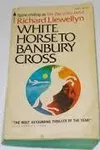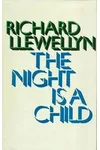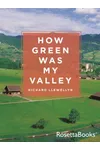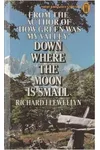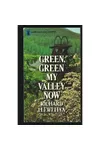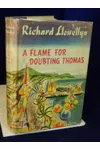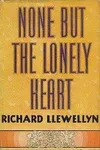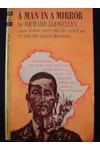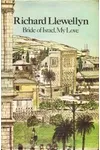Picture a British storyteller who spun the gritty, heartfelt tale of a Welsh mining family into a global sensation—meet Richard Llewellyn! Born in 1906, Llewellyn’s novel How Green Was My Valley captured the world’s imagination, blending vivid characters with the rugged beauty of Wales. His peripatetic life, from coal mines to Hollywood, shaped a legacy that still resonates with readers today.
With a knack for historical fiction and a voice that echoed the struggles and joys of everyday folk, Llewellyn crafted stories that felt like a warm hearth on a stormy night. Let’s dive into the life, works, and enduring impact of this master storyteller whose pen brought Wales to the world.
The Making of Richard Llewellyn
Richard Dafydd Vivian Llewellyn Lloyd was born on December 8, 1906, in Hendon, London, to Welsh parents, though he famously claimed a birthplace in St. Davids, Wales—a myth debunked only after his death. Raised in a lower-middle-class family, Llewellyn’s early years were far from literary. At 15, he washed pots at Claridge’s in London, and by 16, he was in Italy learning hotel management, only to stumble into the film industry. These eclectic experiences—coupled with a stint as a coal miner and five years in the British Army—gave him a worldly perspective that fueled his writing.
By the 1930s, Llewellyn was dabbling in journalism and playwriting, with his mystery play Poison Pen (1938) earning acclaim. But it was his time spent with his Welsh grandfather in the South Wales Valleys that inspired his greatest work, setting the stage for a literary breakthrough that would define his career.
Richard Llewellyn’s Unforgettable Stories
Llewellyn’s masterpiece, How Green Was My Valley (1939), is a love letter to the South Wales coal-mining communities. Narrated by Huw Morgan, the novel paints a nostalgic yet unflinching portrait of a family navigating love, loss, and the encroaching shadow of industrialization. Its lyrical prose and rich dialect won the National Book Award in 1940 and inspired an Academy Award-winning film in 1941, directed by John Ford.
Llewellyn followed with three sequels—Up, Into the Singing Mountain (1960), Down Where the Moon Is Small (1966), and Green, Green My Valley Now (1975)—continuing Huw’s saga with the same heartfelt storytelling. His other novels, like None But the Lonely Heart (1943), a poignant tale of a London drifter (also adapted into a 1944 film), and A Few Flowers for Shiner (1950), showcased his versatility, blending themes of identity and displacement. His final work, A Night of Bright Stars (1979), imagined the life of Brazilian aviation pioneer Alberto Santos-Dumont, proving his ability to weave history into fiction.
Known for his immersive research—Llewellyn worked in a coal mine for months to capture the miners’ world—his style married vivid dialogue with emotional depth, making readers feel the pulse of his settings, from Welsh valleys to distant continents.
Why Richard Llewellyn Matters
Llewellyn’s work immortalized the South Wales Valleys, giving voice to a working-class culture often overlooked in literature. How Green Was My Valley not only shaped perceptions of Welsh identity but also resonated globally, its themes of community and resilience speaking to readers across cultures. Despite criticism for historical inaccuracies or sentimentality, the novel’s emotional truth endures, inspiring BBC serializations in 1960 and 1975.
His peripatetic life—living in Italy, China, Brazil, and Israel—infused his stories with a universal humanity, while his Welsh roots grounded them in a distinct cultural heartbeat. Llewellyn’s ability to craft characters who fight, love, and laugh through adversity ensures his place as a cherished figure in 20th-century historical fiction.
- Born: December 8, 1906, Hendon, London
- Died: November 30, 1983, Dublin, Ireland
- Key Works: How Green Was My Valley, None But the Lonely Heart, A Few Flowers for Shiner
- Awards: National Book Award (1940) for How Green Was My Valley
Snag How Green Was My Valley and dive into Richard Llewellyn’s soulful historical fiction—it’s like stepping into a Welsh valley where every page hums with life!


